Top 10 Foods Highest in Methionine
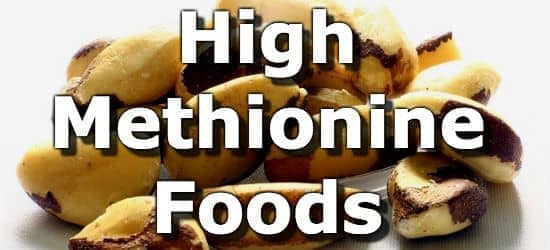
Methionine is an essential amino acid needed for normal metabolism and growth and for helping the liver to process fats. It is also necessary for the production of essential chemicals in the body such as homocysteine, taurine, and sulfate. (1)
Methionine can also help reduce cholesterol levels, prevent kidney stones, reduce the damage from heavy metals in the blood, counteract the toxic effects of acetaminophen, help prevent hair loss, and strengthen nails. (1)
A deficiency of methionine can lead to inflammation of the liver (steatohepatitis), anemia, and greying hair. (1,2) However, a diet low in methionine may also extend lifespan and reduce the risk of cancer. (3)
High methionine foods include turkey, beef, fish, pork, tofu, milk, cheese, nuts, beans, and whole grains like quinoa.
The reference dietary intake (RDI) for methionine is 10.4mg per kilogram of body weight or 4.5mg per pound. A person weighing 70kg (~154 pounds) should consume around 728mg of methionine per day. (4)
Below is a list of the top 10 foods highest in methionine with the %RDI calculated for someone weighting 70kg (154lbs). For more high methionine foods see the extended list of methionine rich foods.
-
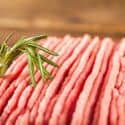 1. Ground Turkey
1. Ground Turkey
Methionine
per 6ozMethionine
per 100gMethionine
per 200 Calories1583mg
(217% RDI)931mg
(128% RDI)1233mg
(169% RDI)More Poultry High in Methionine
- 195% RDI in a 6oz chicken breast
- 115% RDI in a chicken thigh
- 93% RDI in a chicken drumstick
- 40% RDI per 3oz chicken hotdog
See all meats high in methionine.
-
 2. Beef (Skirt Steak)
2. Beef (Skirt Steak)
Methionine
per 6oz SteakMethionine
per 100gMethionine
per 200 Calories1539mg
(211% RDI)905mg
(124% RDI)675mg
(93% RDI)More Red Meat High in Methionine
- 110% RDI per 3oz of beef stew
- 106% RDI per 3oz of lamb roast
- 100% RDI per 3oz of veal
- 89% RDI per 3oz buffalo steak
See all meats high in methionine.
-
 3. Tuna
3. Tuna
Methionine
in a 6oz FilletMethionine
per 100gMethionine
per 200 Calories1505mg
(207% RDI)885mg
(122% RDI)962mg
(132% RDI)More Fish High in Methionine
- 204% RDI per 7oz grouper fillet
- 200% RDI per 6oz salmon fillet
- 182% RDI per 6oz snapper fillet
- 179% RDI per 6oz tilapia fillet
- 153% RDI per 5.6oz mahi mahi fillet
See all fish high in methionine.
-
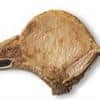 4. Lean Pork Chops
4. Lean Pork Chops
Methionine
in a 6oz ChopMethionine
per 100gMethionine
per 200 Calories1445mg
(198% RDI)850mg
(117% RDI)872mg
(120% RDI)More Pork Products High in Methionine
- 109% RDI per 5oz rack of ribs
- 106% RDI per cup of lean ham
- 85% RDI per 3oz pork bratwurst
- 79% RDI per 3oz of ground pork
- 55% RDI per 3oz of salami
- 46% RDI per 3 slices of bacon
See all meats high in methionine.
-
 5. Firm Tofu
5. Firm Tofu
Methionine
per CupMethionine
per 100gMethionine
per 200 Calories532mg
(73% RDI)211mg
(29% RDI)293mg
(40% RDI)More Soy Products High in Methionine
- 53% RDI per cup of boiled soybeans (edamame)
- 13% RDI per cup of cooked soybean sprouts
- 9% RDI per cup of soymilk
-
 6. Milk
6. Milk
Methionine
per 16oz GlassMethionine
per 100gMethionine
per 200 Calories431mg
(59% RDI)88mg
(12% RDI)518mg
(71% RDI)More Dairy Products High in Methionine
- 57% RDI per cup of yogurt
- 29% RDI per cup of buttermilk
-
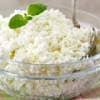 7. Low-Fat Ricotta Cheese
7. Low-Fat Ricotta Cheese
Methionine
per 1/2 CupMethionine
per 100gMethionine
per 200 Calories352mg
(48% RDI)284mg
(39% RDI)412mg
(57% RDI)More Cheese High in Methionine
- 37% RDI per oz of grated Parmesan
- 32% RDI per oz of Gruyere
- 31% RDI per oz of Swiss
- 28% RDI per oz of Gouda
- 28% RDI per oz of Fontina
See all dairy products high in methionine.
-
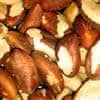 8. Brazil Nuts
8. Brazil Nuts
Methionine
per 1oz HandfulMethionine
per 100gMethionine
per 200 Calories319mg
(44% RDI)1124mg
(154% RDI)341mg
(47% RDI)More Nuts and Seeds High in Methionine
- 36% RDI per oz of hemp seeds
- 23% RDI per oz of squash and pumpkin seeds
- 23% RDI per oz of chia seeds
- 22% RDI per oz of toasted sesame seeds
- 16% RDI per oz of sunflower seeds
- 14% RDI per oz of flax seeds
- 14% RDI per oz of cashews
- 14% RDI per oz of pistachios
- 11% RDI per oz of peanuts
See all nuts and seeds high in methionine.
-
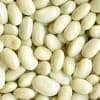 9. Large White Beans
9. Large White Beans
Methionine
per CupMethionine
per 100gMethionine
per 200 Calories261mg
(36% RDI)146mg
(20% RDI)210mg
(29% RDI)More Beans High in Methionine
- 35% RDI per cup of canned navy beans
- 35% RDI per cup of kidney beans
- 31% RDI per cup of black beans
- 30% RDI per cup of great northern beans
- 27% RDI per cup of pinto beans
See all beans and lentils high in methionine.
-
 10. Quinoa
10. Quinoa
Methionine
per CupMethionine
per 100gMethionine
per 200 Calories178mg
(24% RDI)96mg
(13% RDI)160mg
(22% RDI)More Grains High in Methionine
- 43% RDI per cup of teff
- 27% RDI per cup of wild rice
- 23% RDI per cup of kamut
- 14% RDI per cup of rice
- 11% RDI per cup of spaghetti
Printable One Page Sheet
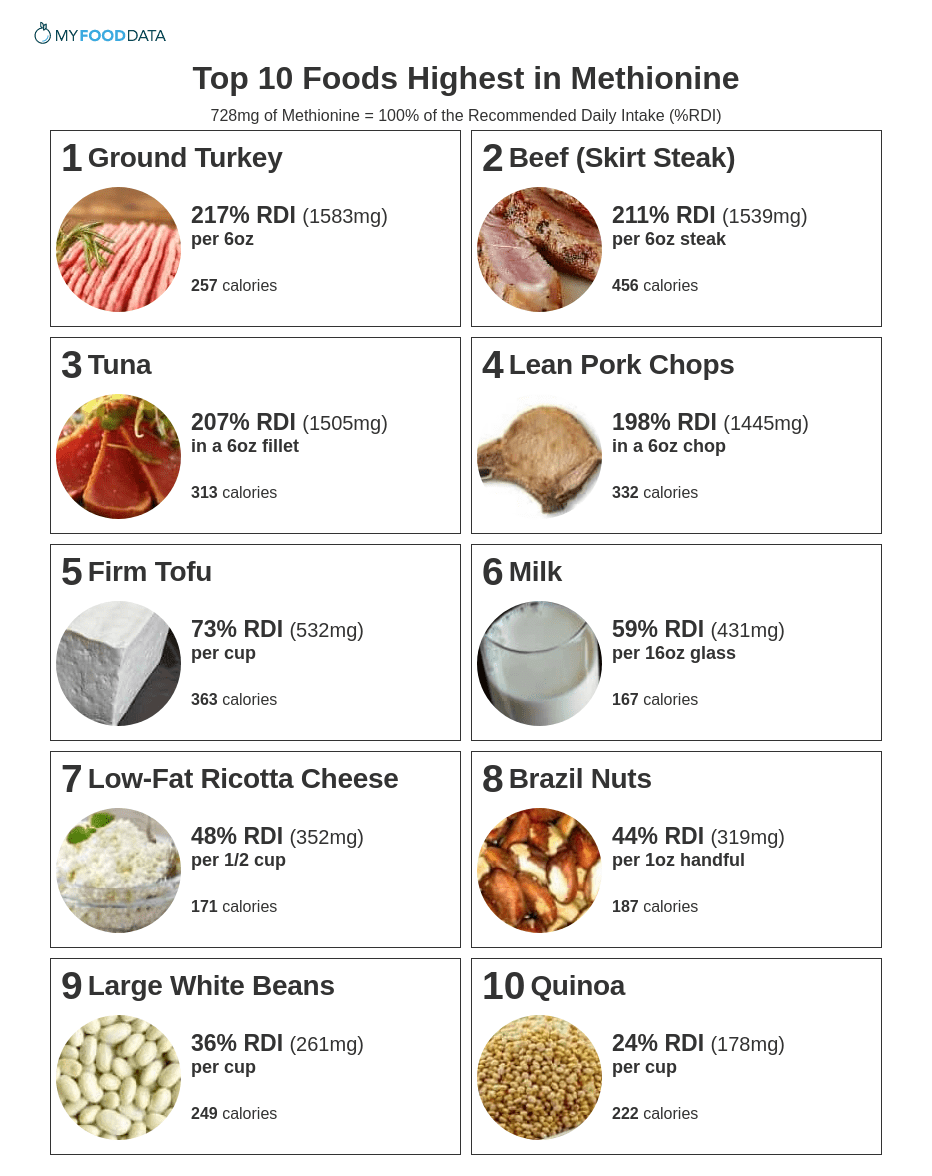
Extended List of Methionine Rich Foods
| Food | Serving | Methionine |
|---|---|---|
| 1. King Crab | in 1 crab leg | 100% RDI (730mg) |
| 2. Shrimp | per 3oz (about 12 large shrimp) | 78% RDI (565mg) |
| 3. Clams | per 3oz serving | 67% RDI (490mg) |
| 4. Eggs | in 1 large egg | 27% RDI (196mg) |
| 5. Green Peas | per cup cooked | 18% RDI (130mg) |
| 6. Sweet Potatoes | per cup mashed | 17% RDI (125mg) |
| 7. Lima Beans | per cup cooked | 16% RDI (116mg) |
| 8. Spinach | per cup cooked | 14% RDI (99mg) |
| 9. Sweet Corn | per cup cooked | 13% RDI (97mg) |
| 10. Avocados | per avocado | 10% RDI (76mg) |
| 11. Kiwifruit | per cup | 6% RDI (43mg) |
| 12. Mamey Sapote | 1 cup chopped | 6% RDI (42mg) |
About the Data
Data for the curated food lists comes from the USDA Food Data Central Repository.
You can check our data against the USDA by clicking the (Source) link at the bottom of each food listing.
Note: When checking data please be sure the serving sizes are the same. In the rare case you find any difference, please contact us and we will fix it right away.
About Nutrient Targets
Setting targets can provide a guide to healthy eating.
Some of the most popular targets include:- Daily Value (%DV) - The daily value (%DV) is a general guideline for consumption that will prevent deficiency of a particular nutrient in most people. The %DV refers to the percentage of an amount that\'s found in a single serving of a food. It also accounts for absorption factors. It is set by the U.S. FDA.
- Recommended Dietary Allowance (%RDA) - The RDA sets an average daily dietary intake level that is sufficient to meet the nutrient requirements of nearly all (97.5%) healthy individuals. It\'s more specific than the daily value, and varies by age and gender. The RDA is set by the US National Institutes of Health.
- Reference Dietary Intake (%RDI) -The reference dietary intake is similar to the recommended daily allowance, but is specific to age and gender. The RDI for amino acids is set by the U.N. World Health Organization.
- Adequate Intake (%AI) - This value is primarily used in reference to omega-3 and omega-6 fats. The Adequate Intake is set by the U.S. Institute of Medicine. Because there is less evidence to determine the ideal targets for consumption of these nutrients, the specific amount is considered to be less reliable. Using the term Adequate Intake, rather than one of the other terms, helps to emphasize that the ideal intake of that particular nutrient has not yet been scientifically determined.
See the Guide to Recommended Daily Intakes for more information.
Want to set your own targets? Sign up for an account and set custom targets in the daily food log.From the Nutrient Ranking Tool
Use the ranking tool links below to select foods and create your own food list to share or print.
- Foods High in Methionine
- Foods Low in Methionine
- Vegetables High in Methionine
- Fruits High in Methionine
- Vegetarian Foods High in Methionine
- Nuts High in Methionine
- Grains High in Methionine
- Beans High in Methionine
- Dairy High in Methionine
- Breakfast Cereals High in Methionine
- Fast Foods High in Methionine
View more nutrients with the nutrient ranking tool, or see ratios with the nutrient ratio tool.
Related
Data Sources and References
- Canadian Drug Database on Methionine
- Methionine Deficiency and Hepatic Injury in a Dietary Steatohepatitis Model. Dig Dis Sci. 2008 Mar; 53(3): 767–776.
- Methionine restriction and lifespan control.
- World Health Organization (WHO) Technical Report Series – Protein And Amino Acid Requirements In Human Nutrition ISBN 978 92 4 120935 9
- U.S. Agricultural Research Service Food Data Central
Try the recipe nutrition calculator, or daily meal planner.
Create a free account to log and track foods.

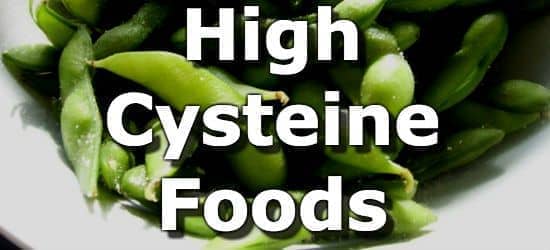 Next ➞
Next ➞